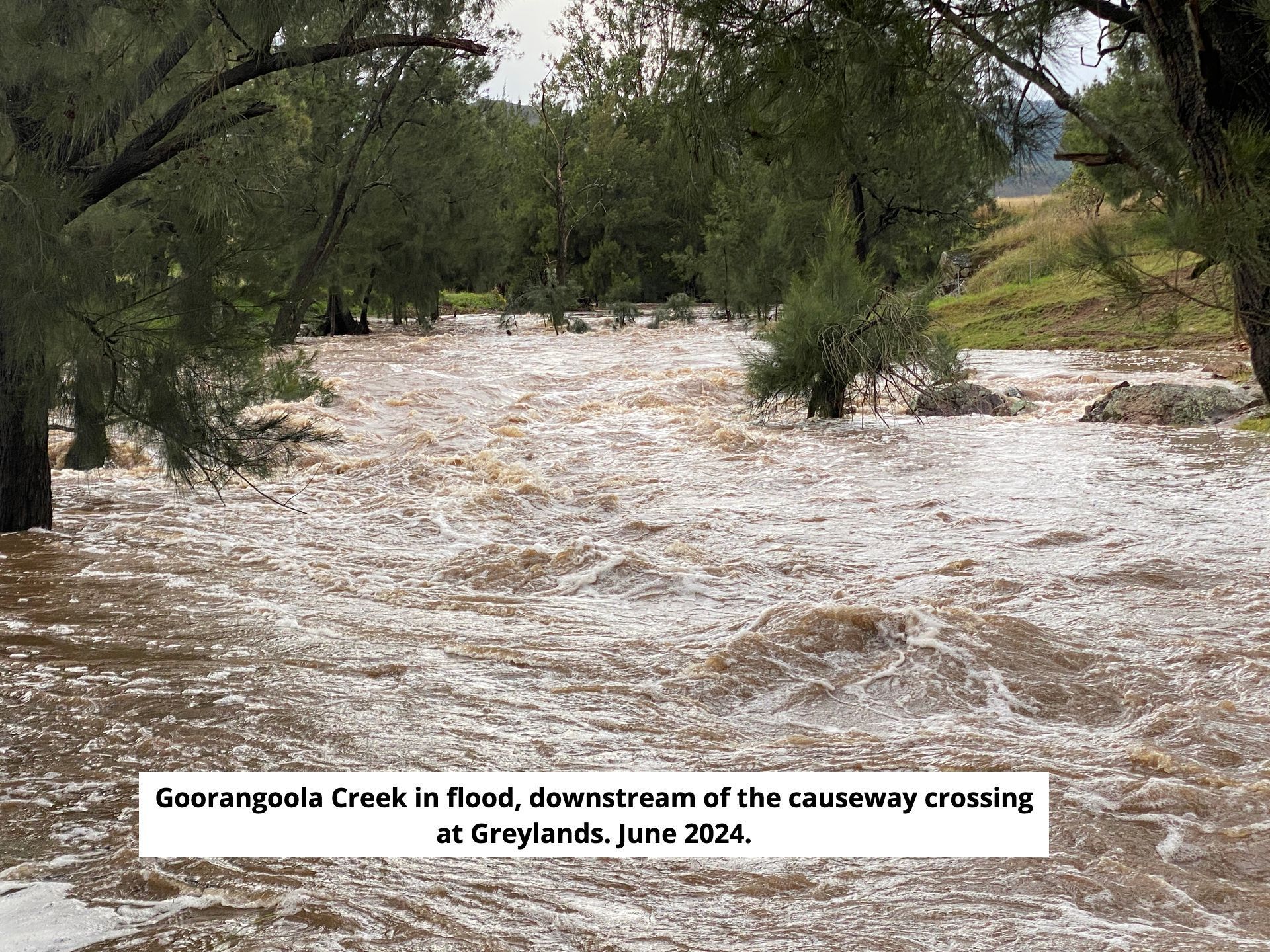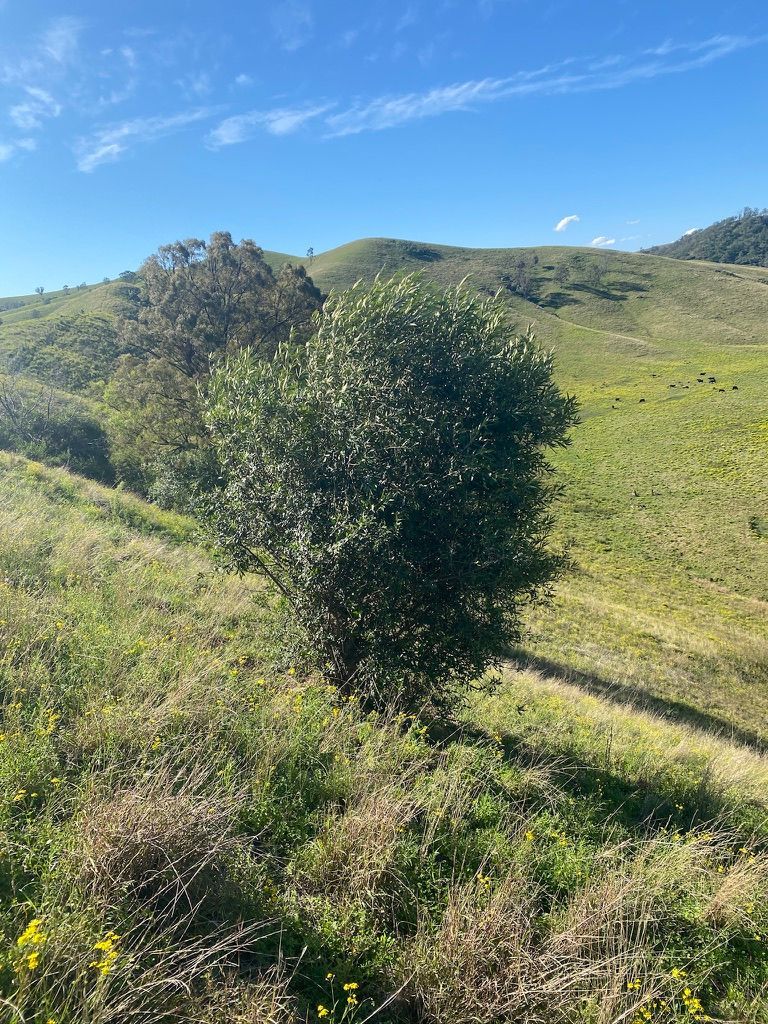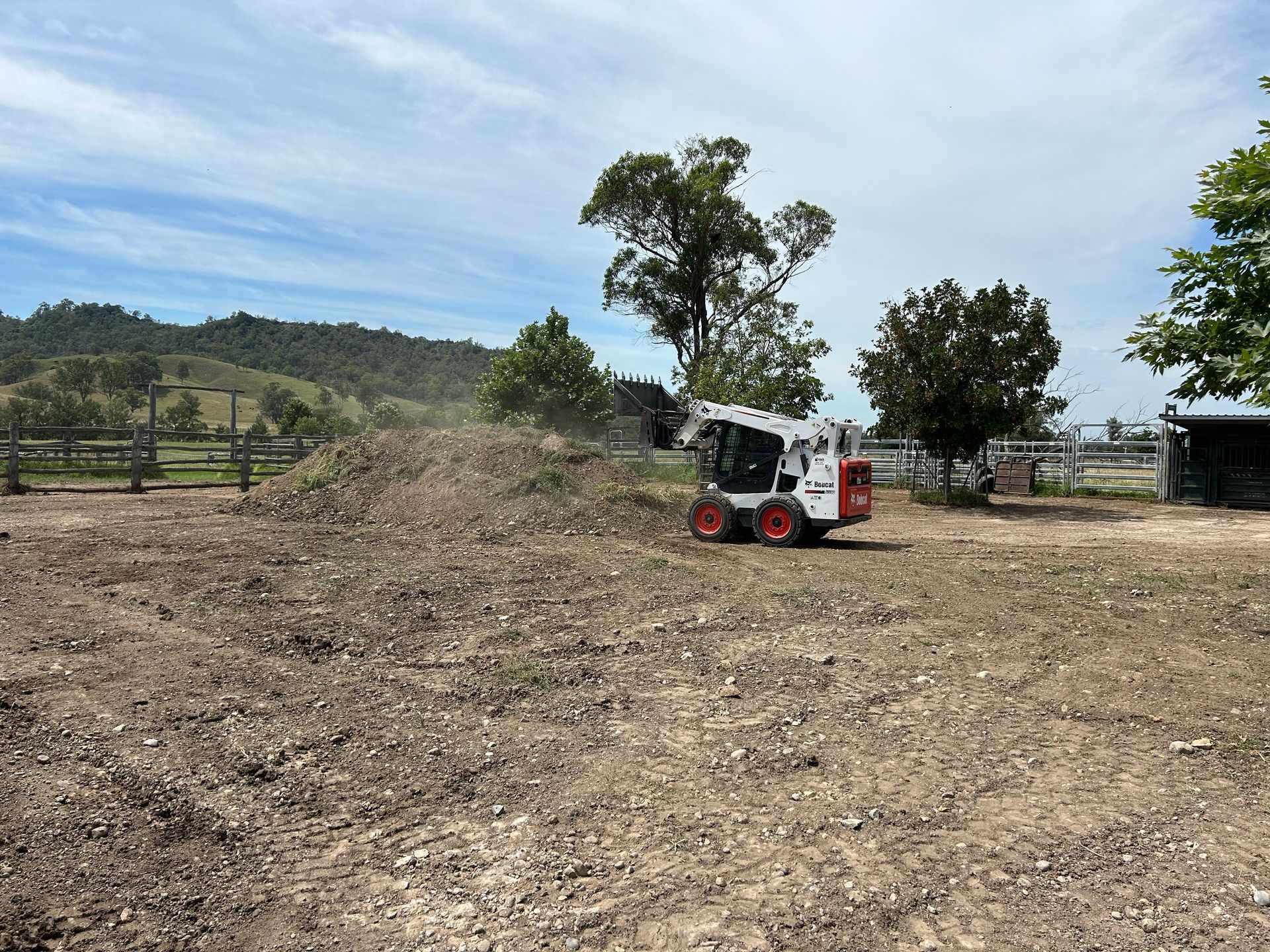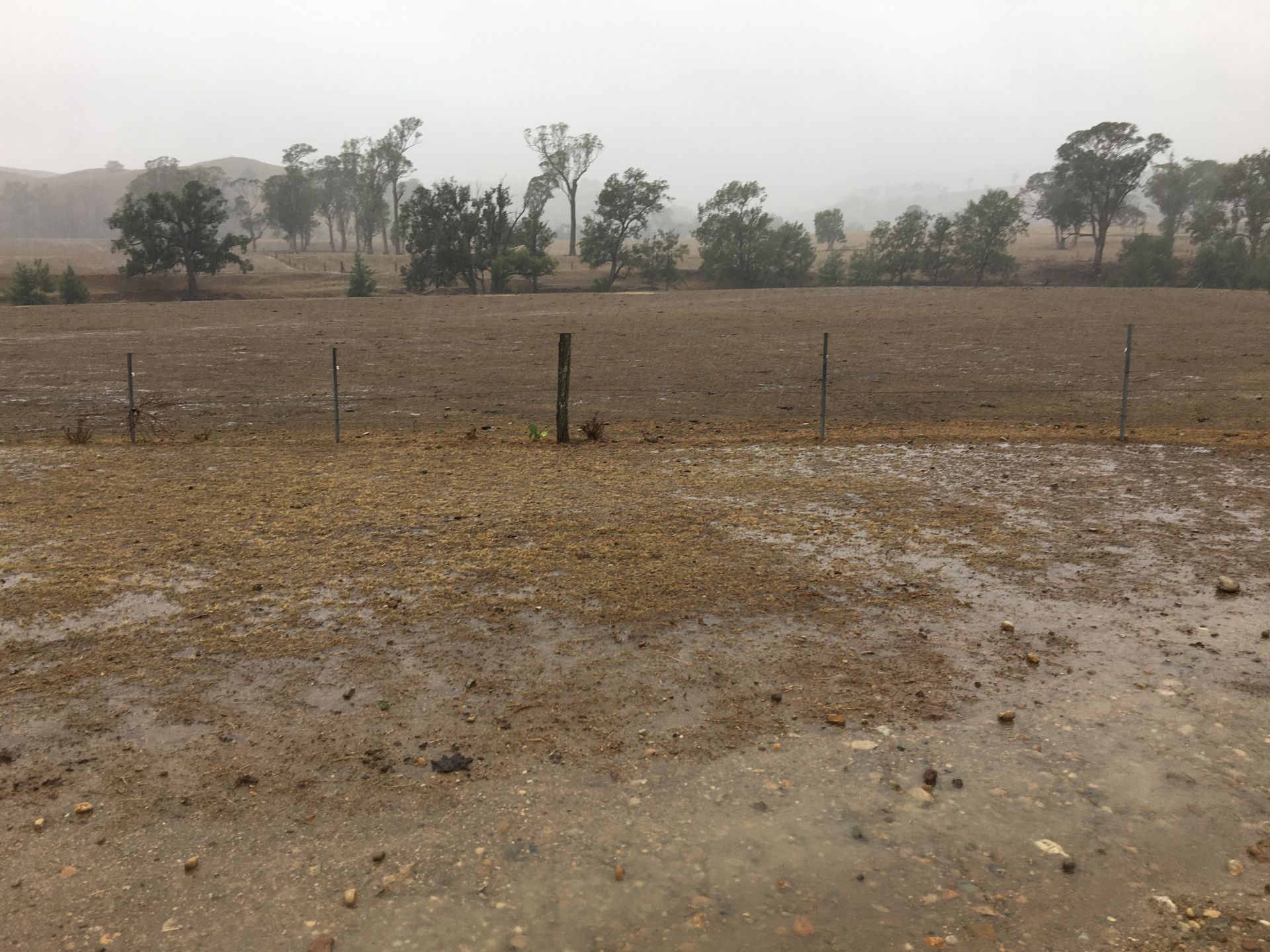Floods at Greylands
- By Matt Bailey
- •
- 02 Feb, 2025
When Goorangoola Creek becomes a raging torrent
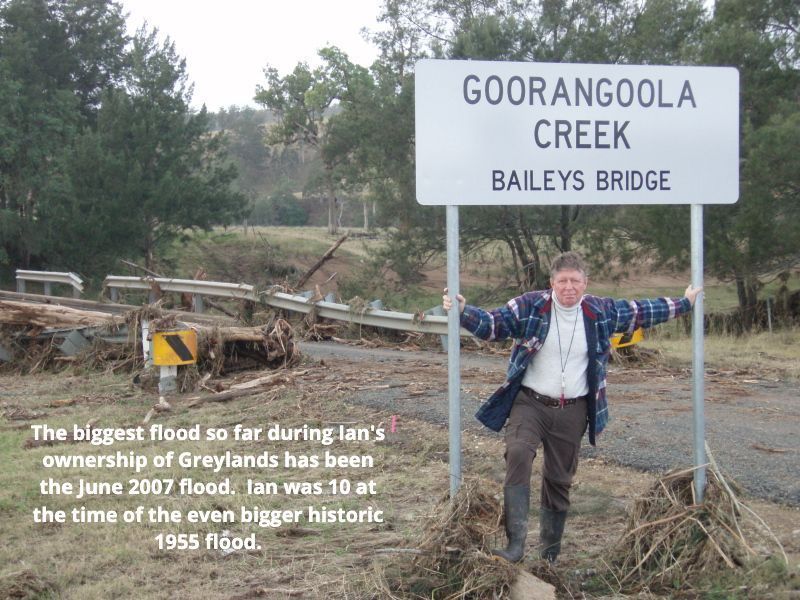
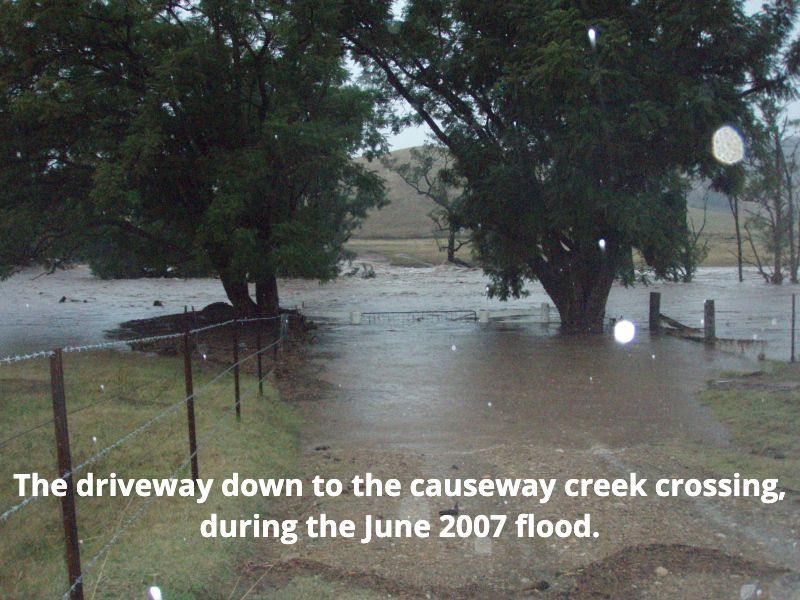
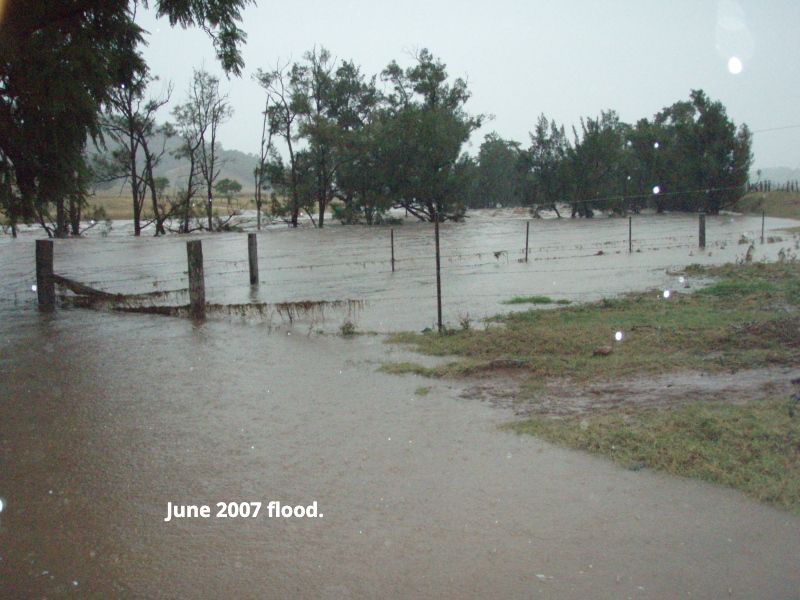
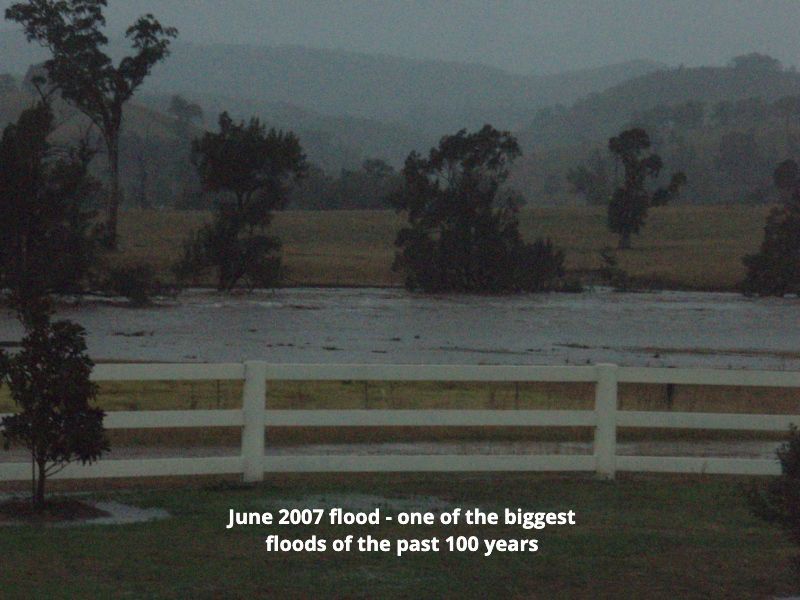
In other blogs, the impact of droughts at Greylands has been described. Over the years we have also had some major floods. A lot of the more extreme flood events we have had, have been part of the well described Australian 'East Coast Lows'. Those events draw in moisture from the Pacific Ocean, causing torrential rain, often for several days, bringing rain from the coast towards inland areas. Our big flood events are nearly always during the 'La Nina' periods, associated with greater than average rainfall for the East Coast of Australia.
In February 1955, Greylands owner Ian Bailey, his sister and mother experienced first hand the biggest flood of the past 100 years in Singleton, after the Hunter River broke its banks and flooded the majority of the Singleton township. The Hunter Valley has a vast area of land that drains further up the valley into the Hunter River. Singleton, on a very flat plain, with the Hunter River on the edge of the town, has been prone to flooding during the biggest flood events.
The video link below is of a historic news video in relation to the 1955 Hunter River flood.
https://www.youtube.com/watch?v=4loGVxRPUAA
In February 1955, Greylands owner Ian Bailey, his sister and mother experienced first hand the biggest flood of the past 100 years in Singleton, after the Hunter River broke its banks and flooded the majority of the Singleton township. The Hunter Valley has a vast area of land that drains further up the valley into the Hunter River. Singleton, on a very flat plain, with the Hunter River on the edge of the town, has been prone to flooding during the biggest flood events.
The video link below is of a historic news video in relation to the 1955 Hunter River flood.
https://www.youtube.com/watch?v=4loGVxRPUAA
Ian, aged 10 at the time, along with his sister Lorna and mother Elsie, had to climb onto a 'lowboy' wardrobe, as the water rose higher. Allan Bailey (Ian and Lorna's father) was 20km away at Greylands at the time - the homestead at Greylands was built at a site elevated enough from the creek that it will never be at risk of riverine flooding. So while Allan himself was safe from floodwaters at the time, he couldn't leave to help, due to being flooded in at Greylands.
Ian recounts memories of the February 1955 flood in Singleton and their rescue from the floodwaters, "Mum managed to find the drawer beside the kitchen sink which was underwater, and struggled to open it, as the wood was now swelling. Anyway she got it open and could feel for the butcher’s knife. I plunged it through the plaster ceiling and cut a jagged ‘square’ hole, that we might each fit through, above the lowboy we were all sitting on. Once inside the ceiling (if we could achieve it) we knew that if it still kept rising we would be doomed. No one would know we were inside, and I would be unlikely to be able to lift the corrugated iron and get us out on top of the roof. There had been a secondary rapid water rise and this was our plan, anyway. The rise halted, and rescues were getting underway on day 3 and a boat pulled up and secured to the brick support of the side verandah, and we were all loaded. Mum, Lorna, cousin Sue, Great Aunt Belle and me and the boat headed at flood water pace along York St and pulled in on top of Singleton High School steps. Boy those power wires had looked close. We were all sitting at desks in various classrooms on the top floor and then there were helicopters and Army ducks about continuing the rescues."
That 1955 flood resulted in numerous deaths, especially in Maitland, further downstream.
Pictured below, people escaping to the safety of their roof to be rescued in the 1955 Singleton flood. Photo on display, remembering the 1955 Singleton flood, 70th anniversary at the Singleton Library, 2025.
Ian recounts memories of the February 1955 flood in Singleton and their rescue from the floodwaters, "Mum managed to find the drawer beside the kitchen sink which was underwater, and struggled to open it, as the wood was now swelling. Anyway she got it open and could feel for the butcher’s knife. I plunged it through the plaster ceiling and cut a jagged ‘square’ hole, that we might each fit through, above the lowboy we were all sitting on. Once inside the ceiling (if we could achieve it) we knew that if it still kept rising we would be doomed. No one would know we were inside, and I would be unlikely to be able to lift the corrugated iron and get us out on top of the roof. There had been a secondary rapid water rise and this was our plan, anyway. The rise halted, and rescues were getting underway on day 3 and a boat pulled up and secured to the brick support of the side verandah, and we were all loaded. Mum, Lorna, cousin Sue, Great Aunt Belle and me and the boat headed at flood water pace along York St and pulled in on top of Singleton High School steps. Boy those power wires had looked close. We were all sitting at desks in various classrooms on the top floor and then there were helicopters and Army ducks about continuing the rescues."
That 1955 flood resulted in numerous deaths, especially in Maitland, further downstream.
Pictured below, people escaping to the safety of their roof to be rescued in the 1955 Singleton flood. Photo on display, remembering the 1955 Singleton flood, 70th anniversary at the Singleton Library, 2025.
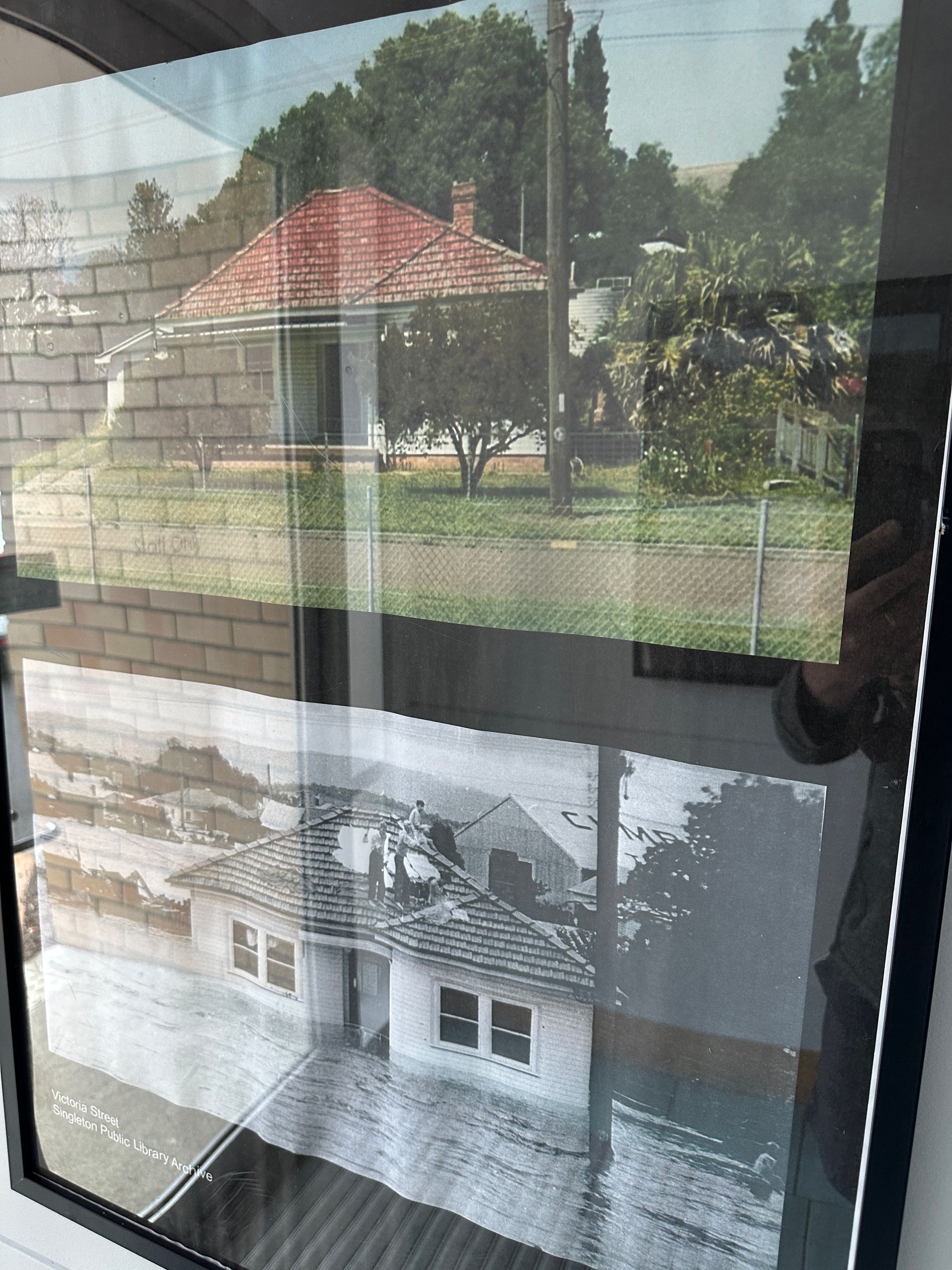
Photo below is of Ian's uncle's pharmacy (Chapman Chemist) in Singleton, becoming inundated by floodwaters in 1955 (compared to a more recent photo of the same spot). Photo courtesy of Singleton Public Library Archive - on display at Singleton Library 2025, remembering Singleton 1955 flood, 70th anniversary.
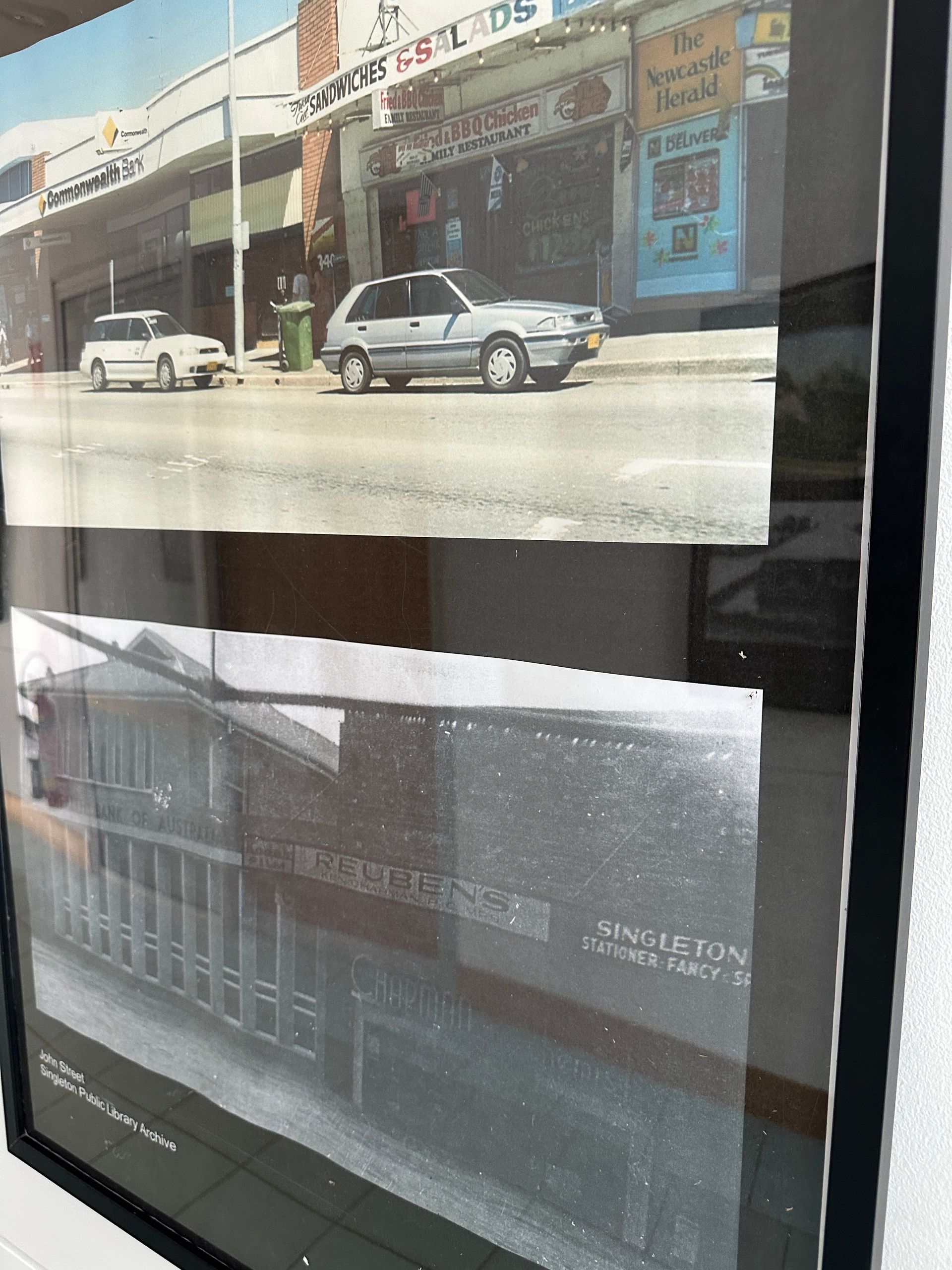

Following the historic 1955 flood, Singleton and Maitland invested significantly in building a flood levee to help protect the main residential areas from future flooding. There have been numerous floods since then that have shown the value of the levee and the levee has been further added to at various times since the 1955 flood.
https://flooddata.ses.nsw.gov.au/flood-projects/singleton-audit-of-flood-levees
The video below demonstrates the Singleton flood levee at work protecting the majority of Singleton during a major flood in July 2022.
https://www.youtube.com/watch?v=zTJgDQckUeo
2025 photo below of part of the Singleton flood levee that diverts floodwaters away from the town, during major flooding.
https://flooddata.ses.nsw.gov.au/flood-projects/singleton-audit-of-flood-levees
The video below demonstrates the Singleton flood levee at work protecting the majority of Singleton during a major flood in July 2022.
https://www.youtube.com/watch?v=zTJgDQckUeo
2025 photo below of part of the Singleton flood levee that diverts floodwaters away from the town, during major flooding.
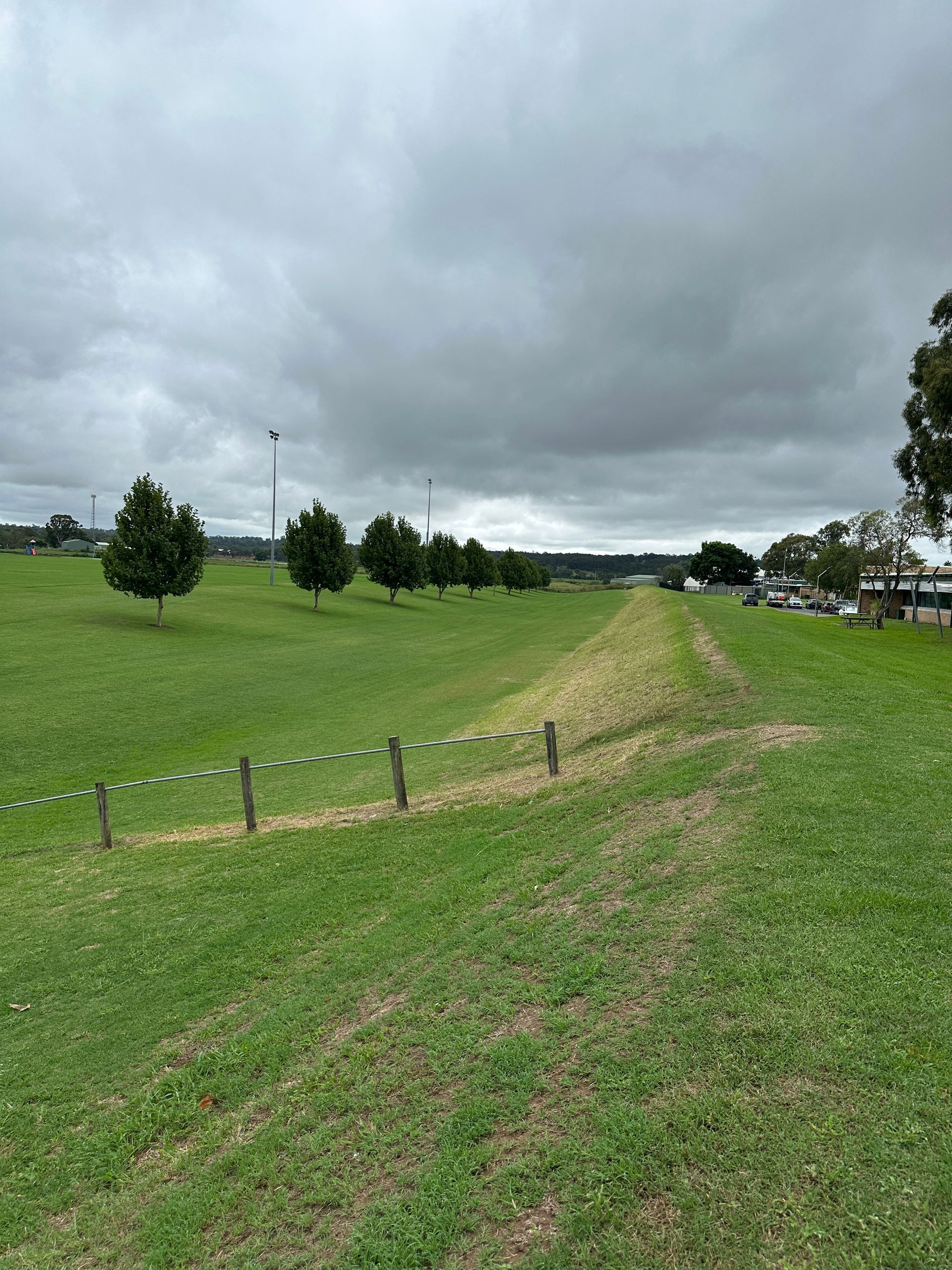
Crossing flooded creeks can involve significant risk and gradually the local council has been converting the multiple causeway crossings along Goorangoola Rd to bridge crossings. However, there are still numerous creek crossing causeways, often with water flowing over the road, heading past Greylands towards Goorangoola.
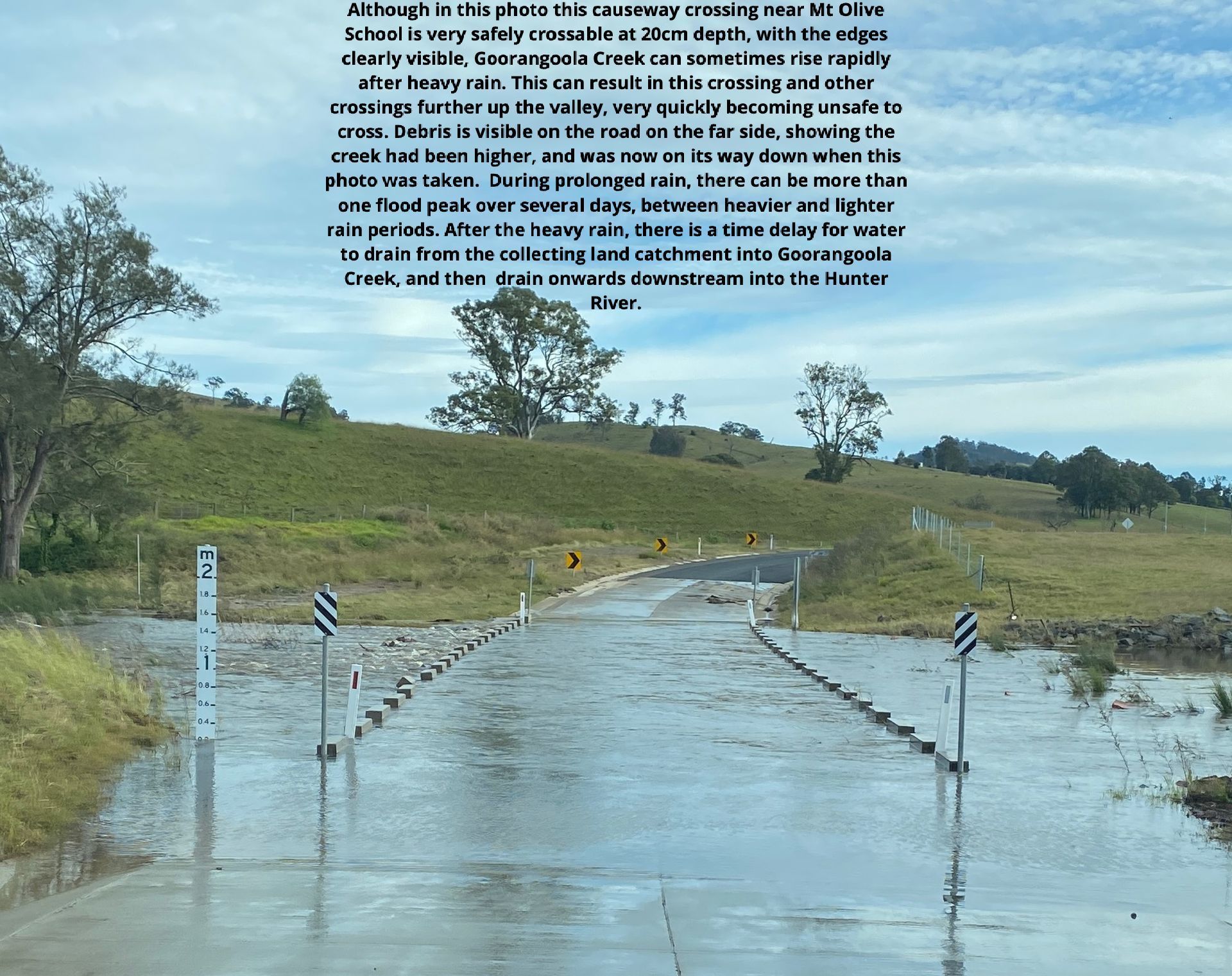
It doesn't take much of a flood to make the causeway crossing across Goorangoola Creek unpassable at Greylands. If needed, we can always get out by going out a back way through the paddocks in a 4 wheel drive vehicle, avoiding the creek crossing. Unless a flood is very small, creek crossing stock fencing tends to get washed out by the flood, requiring repairs as soon as the creek goes down again. The hard-working Wilkinsons have repaired flood damaged fences after floods countless times over the years. During big floods, there can be land damage including occasional land slips. Sudden torrential rain can cause flash floods which can result in rapid creek rises and erosion. Getting around paddocks can get harder with bogging risk in mud. Various gastrointestinal cattle worms can occur more readily in wet conditions.
Despite the challenges of floods and the extra work it creates for the hard-working Wilkinson team with fence repairs, thankfully what follows is good grass growth and plenty of drinking water for stock. That sure beats drought conditions!
Despite the challenges of floods and the extra work it creates for the hard-working Wilkinson team with fence repairs, thankfully what follows is good grass growth and plenty of drinking water for stock. That sure beats drought conditions!
